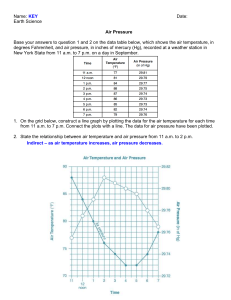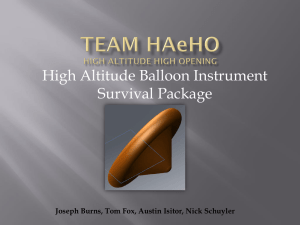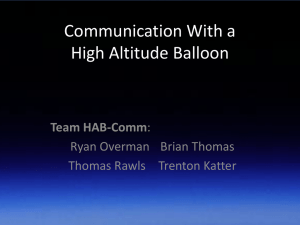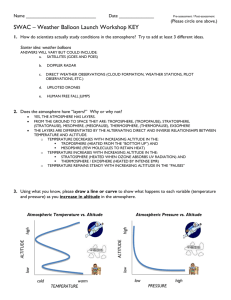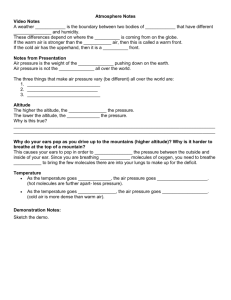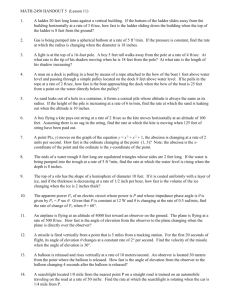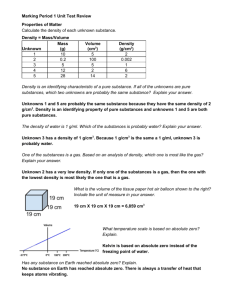Design and Launch of a Balloon Re
advertisement
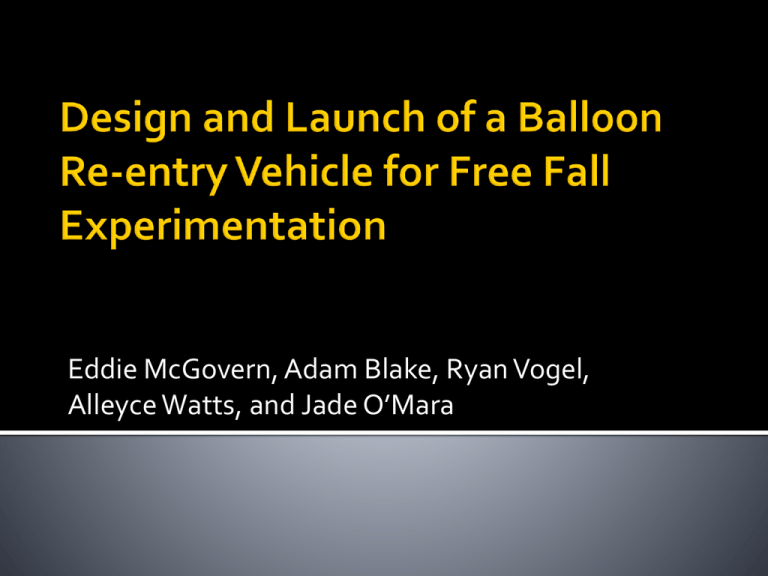
Eddie McGovern, Adam Blake, Ryan Vogel, Alleyce Watts, and Jade O’Mara Introduction of 2011 Team History and working designs of High Altitude Balloon Design Parameters Objective Timeline Thus Far Questions? Team Leader: Eddie McGovern Group Members: Jade O’Mara Alleyce Watts Ryan Vogel Adam Blake Group Advisor: Dr. Slater Funded by the National Science Foundation, the Wright State University High Altitude Balloon team (WSU HAB) has had 17 successful launches and recoveries. Throughout these tests, WSU has achieved in launching devices to heights of nearly 100,000 feet (40,000 ft above regulated airspace) while conducting experiments containing temperature sensors, cameras, video transmitters/recorders, actuation devices, etc. Tear drop and box configuration Initial design with two box configuration Design parameters include but are not limited to: •A maximum weight per unit of six pounds • An altitude parachute deployment of 65,000 feet • Design of parachute to withstand a drag of 125 mph •GPS, Beacon, and APRS needed to relocate upon re-entry •Accelerometer used to record data on free-fall characteristics This quarter the HAB team will create a scaled atmospheric reentry ballute. A ballute is an inflatable balloon parachute, typically made from a thin, flexible material. This vehicle will be used to test and demonstrate the aerodynamic stability of various ballute shaped designs for the ILC Dover for a Mars atmospheric decelerator . Image: Andrews Space, INC A transmit/receive tower on top of the Russ Engineering Center will be used for digital control and communication with the balloon’s payload for an approximate 300 miles radius around campus. Chosen Design: •Balsa Wood frame with foam nose •Whole frame intended to be covered with iron on plastic •Inflatable thin film or solid foam ring to be placed on top to simulate ballute shape.


